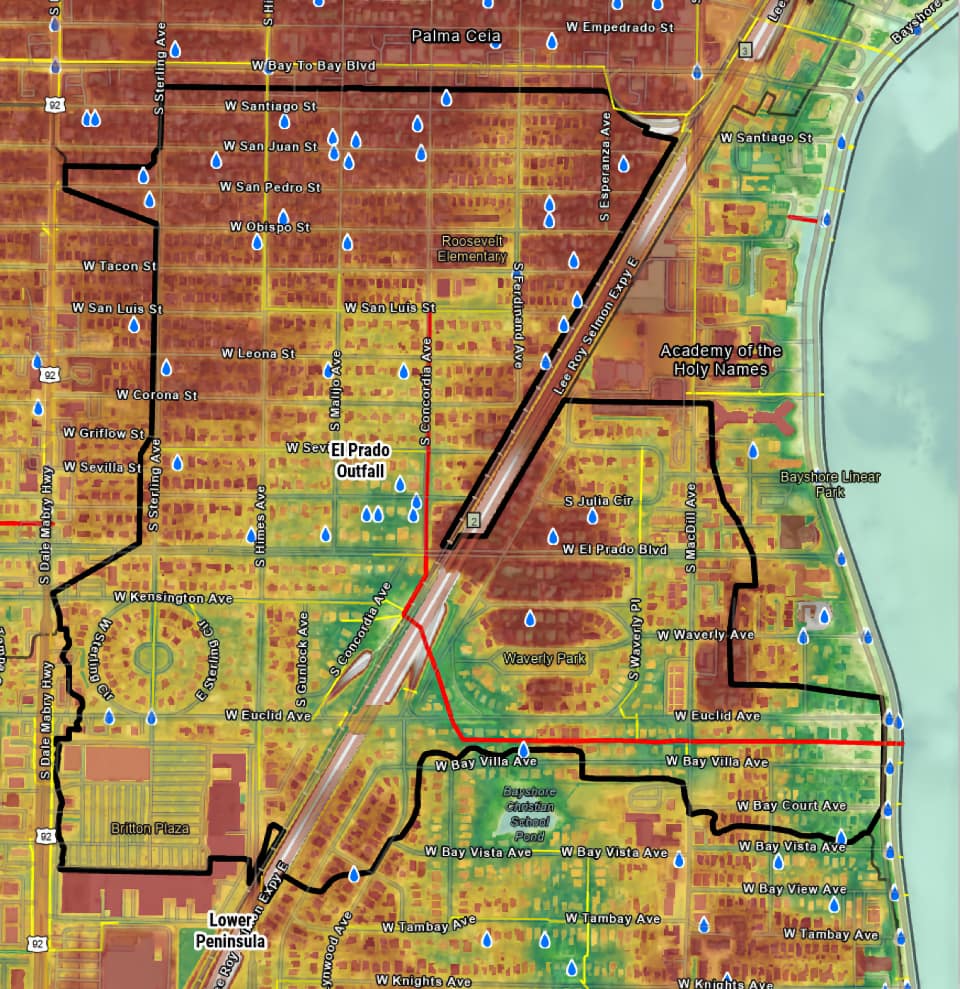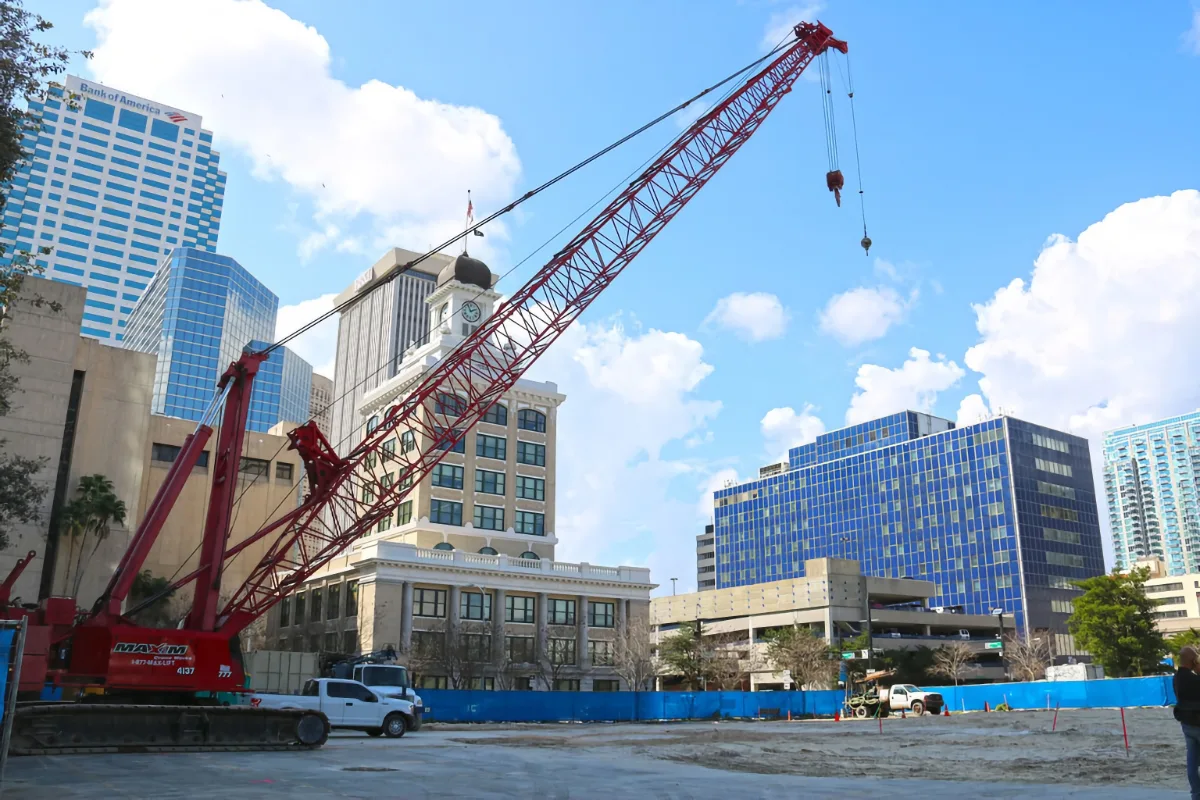Council met for a workshop Thursday morning on a number of topics. As the subject of the agenda and staff time has been a big topic lately, it’s a good reminder that workshops are where the longer discussions are supposed to happen. The subject matter is often important and related to ongoing discussions, sometimes budget, sometimes policy. They are rarely previewed here because speculating on a powerpoint presentation isn’t fair to staff. A vote isn’t being taken. What comes from the discussion is what matters.
The combined discussions around stormwater helped put together a timeline that is important context. The city’s stormwater budget comes from a special tax assessment. That didn’t start until 2003. In 2016 that assessment was significantly raised which has led to this point. In between there was a pandemic that shut the world down and more recently two hurricanes that brought different types of destruction to different parts of the city. A stormwater masterplan is for fresh water. Rain. Saltwater flooding from storm surge is an entirely different issue, and while it may seem related, they are mitigated with different types of engineering. The principal engineer from Applied Sciences, the firm doing the master plan said, “We cannot solve flooding problems from hurricanes.” The stormwater master plan is designed to address normal rain. Afternoon summer thunderstorms, not Milton level rainfall.
First item covered was an update on the stormwater master plan. This was a $5 million dollar contract approved by council last summer, prior to the hurricanes. The master plan is a comprehensive evaluation of all the city’s flood basins for stormwater mitigation. The city is broken up into 47 basins. Some areas had previously been evaluated, a gap analysis was performed to determine what was missing, and the remaining portions are being done as part of the master plan. An online portal is coming soon where the community will be able to upload photos and documentation of the flooding they experienced (or experience during the coming summer rains/hurricane season) to help inform the modeling. The current timeline has the modeling completed by February 2026, alternate analysis by December 2026, and project recommendations June 2027. Just in time for a new mayor and council to make decisions about. The completion of the masterplan is anticipated to save property owners 35% on their flood insurance.
There was a broader discussion around the monthly report of stormwater maintenance, which is also available as a pdf file from the mobility page on the city web site (scroll down the page). Council member Hurtak spoke to broadening that information, and it would be nice if the raw data was also made available. Even if staff do not have the resources to do more with it now, the public might. This site even. Turning a list of addresses in a spreadsheet into a map with data layers from the city’s GIS library is one of the things reader support helps in building out for Tampa Monitor.
The final item was people and cost. Outgoing Director of Mobility Vik Bhide was asked by Council member Carlson what advice he would give to council if he were in their shoes. The short of his answer was find more money and commit it to stormwater. He’s confident any audit of his department will find that they have effectively spent the money on the projects council approved in the budget. They spend every dollar budgeted and “clearly it hasn’t been enough.”
The bottom line is as with a lot of infrastructure in Tampa, the stormwater system was designed and built fifty, seventy-five years ago. Built for a different environment and not with the future in mind. And it was left to languish until 9 years ago. Has it been well managed over the last decade? That’s to be determined. A motion was made by Council member Carlson for the council budget analyst to work with staff to put together a timeline of the stormwater assessment fees. Clearly budget for stormwater will be a priority this fall for city council, where the money comes from is the question.
Additionally Council moved forward with:
- setting a July 17 date for the naming of the multi-sports field in Forest Hills after Roland Paz, Sr.
- to ask the admin to consider creating a fund to set aside money to assist interested property owners with costs related to determining if graves exist on their land.
- to start the process in better regulating leases for required parking (when a developer uses an off-site parking lease to meet parking requirements for a development).
- and to transmit the 13 land development code changes to the planning commission. There will be an additional public hearing at the planning commission before they vote on the proposed changes, with a first council adoption hearing in August. The changes mostly relate to cleanup on setbacks and increasing the required dimensions for driveways and parking garages. The code hasn’t kept up with the average car length which results in vehicles not fitting into the built space. That results in people parking (often illegally) on the right of way or street.






3 responses to “Stormwater: Council Workshop 5-22-25”
[…] morning council held a workshop with the majority of their time focused on the 3 items related to stormwater. The key […]
[…] watching is the “Davis Islands Stormwater Analysis” from the same engineers that presented the stormwater master plan update at the last workshop. The one where the principal engineer said “We cannot solve flooding […]
[…] only relates to fresh water. Rain. Normal summer showers. A point emphasized at the May workshop focused on stormwater as well. Beyond the mechanics, on substance, the numbers don’t lie. The rates haven’t changed […]